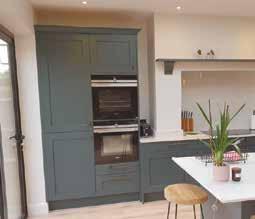
5 minute read
The History of Skara Brae
from Stevenage Jan 2021
by Villager Mag
By Catherine Rose

Advertisement
Situated along the coast at the Bay of Skaill, It is recorded that the village was discovered after a roughly between Stromness and Birsay on the particularly bad storm on Orkney in 1850. The storm little Scottish island of Orkney, stand the ruins of washed away a large sand mound called Skerrabra, a Neolithic village called Skara Brae. A UNESCO which was hiding a group of immaculately preserved World Heritage site managed by Historic Scotland, circular stone structures complete with beds and it is the most well-preserved village of its age in other stone furnishings still intact inside. Europe. William Watt, the landowner, who was living at Skail House nearby, began excavations and on realising The ancient site of Skara Brae is approximately 5,000 the importance of the find contacted George Petrie, years old and so well preserved that it is possible the island’s well-known antiquarian. All the finds at to get a real and rare glimpse into how our ancient the site were subsequently meticulously catalogued ancestors lived in 3000 BC – long before even and included beads, tools (particularly knives and Stonehenge and the Pyramids of Giza were built. scrapers) and objects that historians have only Ten dwellings have been uncovered at Skara Brae, been able to speculate on but were possibly either and eight of them were apparently homes. devotional or recreational. A set of what look like When the village was first built, the houses would dice were amongst the discoveries. not have been on the coast as they are today, but All the objects were carved or made from stone, some distance inland. Coastal erosion over the bone, tusks, animal teeth and wood. There was also centuries means that they now overlook the beach. pottery. The village was inhabited between 3100 BC and Petrie eventually abandoned the excavations and, 2500 BC probably by successive generations of following looting and weather damage, the site was families, until it was abandoned. Although it has taken under the protection of the Ministry of Works been dubbed the ‘Pompei of Scotland’, it is unlikely in the 1920s. that a catastrophic event occurred which led to its Initially it was believed that Skara Brae was a Pictish abandonment and subsequent preservation, as no village. However, radiocarbon dating in the 1970s skeletons have been unearthed there, suggesting identified it as being much older, confirming that it that the lifestyle of its people gradually changed and was constructed during the Neolithic Period (or New they eventually decided to move on elsewhere. Stone Age). 4 Please mention The Villager and Town Life when responding to adverts

The ancient buildings are made from flat stones that have been layered on top of each other and set into the mud, drystone wall fashion. Some of the walls, which would originally have been around eight feet high, were clearly more skilfully constructed than others, suggesting different levels of ability in the builders. The spaces between the earth and the stones were filled with ‘midden’ – basically the organic rubbish produced from day-to-day living such as animal bone and shells. The round dwellings are linked by narrow brick-lined and roofed passageways. They would have been very dark and filled with smoke but also quite warm. One of the most remarkable things about Skara Brae is that the furnishings of the homes are still intact, including beds, dressers, and chairs. Each circular dwelling has a similar layout, with one ‘living room’ containing a hearth for cooking and warmth, a stone dresser and built-in stone ‘box’ beds to the sides complete with headboards. These were probably lined with straw and animal skins. Floor space in each dwelling was around forty square metres. Due to the lack of trees and scarcity of wood on the island at that time, it is possible that peat was burned in the hearths as peat ash has been found amongst the midden. The settlement even had indoor toilets and drainage, which ran from each hut into a main sewer. It is believed that the largest structure was used as a workshop due to the fact it has no hearth or beds. The houses would have originally had a turf roof. Today, one of the dwellings has had its roof replaced, partly to protect it and partly to show how it would have looked. There is also a mock-up of a complete dwelling next to the museum at the site. Some of the homes are newer than others suggesting that generations of families lived here and built new houses on top of the old. Pottery and clay fragments found here show that the people used what is known as ‘groove ware’ – straight-sided pots and bowls decorated with grooves in patterns that have become synonymous with Orkney. The inhabitants clearly farmed and kept livestock as well as hunting and fishing. No weapons were found, suggesting the people led a relatively peaceful life. But it is likely that we will never know what they called themselves or the language they spoke, as no written records exist. Due to its remoteness, Orkney has a wealth of ancient sites including its famous standing stones and numerous burial mounds. This beautiful little island may yet be hiding many more ancient archaeological secrets.



... another completed project near you


Kitchen | Bedroom | Home Study For all your design, supply and installation needs Family run business
Tel: 01438 222929 www.kitchenergonomics.co.uk
Visit our showroom: Unit E, Gateway 1000, Whittle Way, Arlington Business Park, Stevenage SG1 2FP Monday to Friday 9.00am to 5.00pm, Saturday 10.00am to 4.00pm











